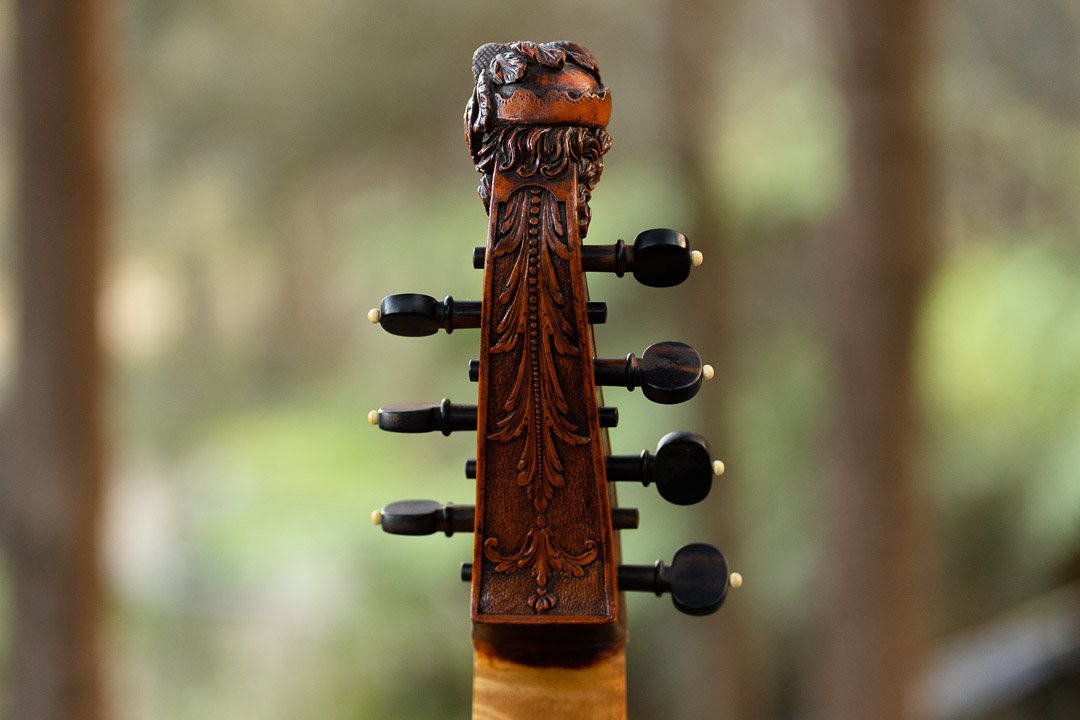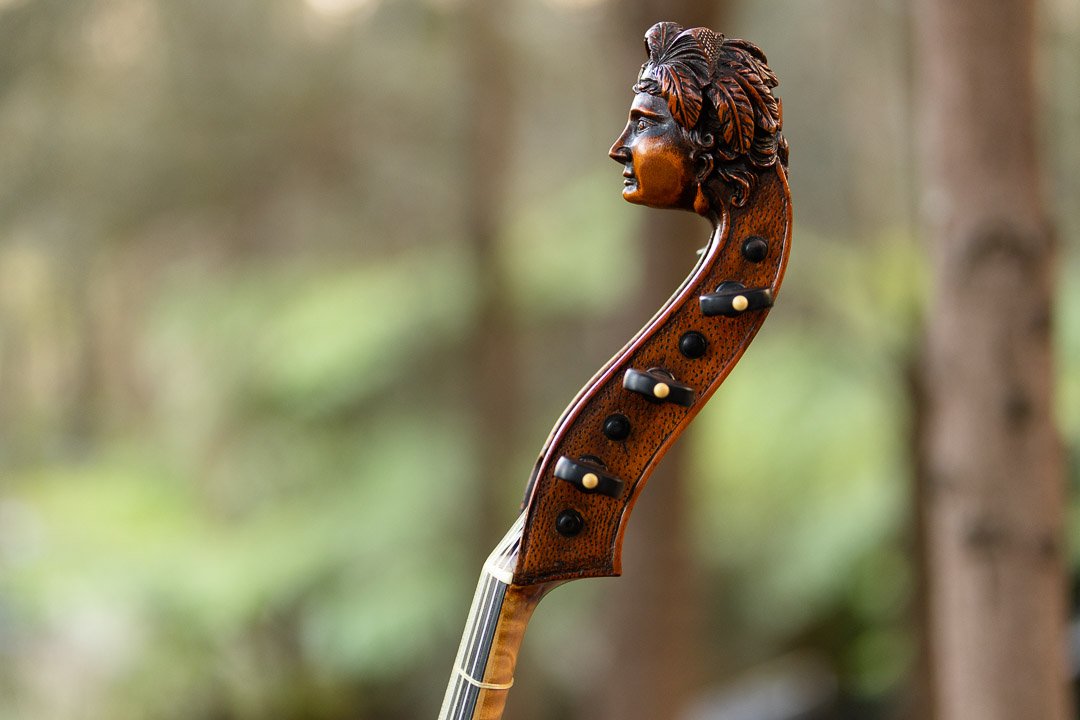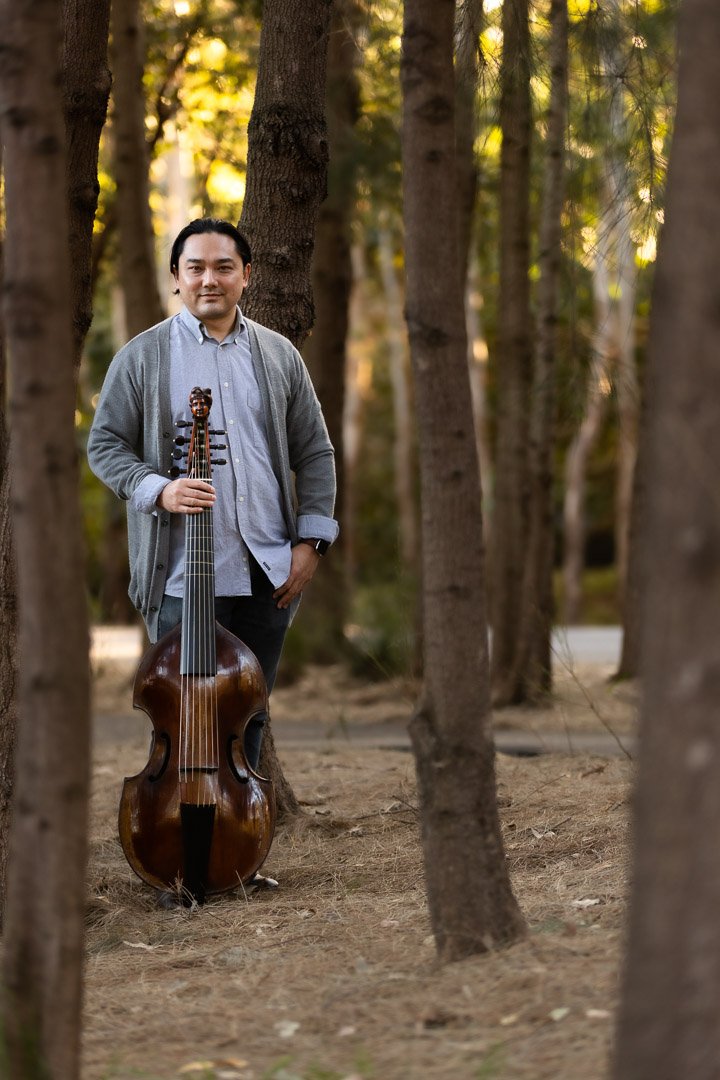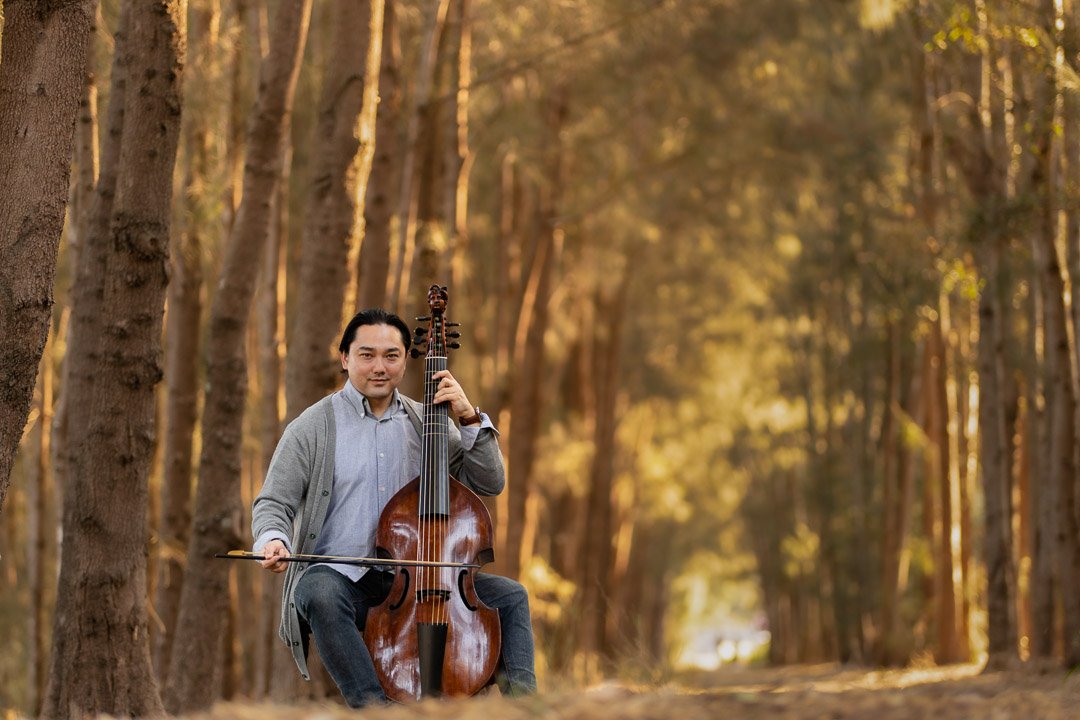Georg Philipp Telemann
Fantasias
Fantasias for Viola da Gamba (Hamburg, 1735)
This recording is dedicated to Catharina Meints
Shaun Ng, viola da gamba
Performed on a historical viola da gamba by Jean Nicolas Lambert (Paris, 1739)
‘The Lambert bass viol is the only original French antique viol in Australia and it is interesting to speculate that the original owner of the viol may also have played the Telemann fantasias, which had been published four years earlier…. These fantasias are mostly in three short movements: fast-slow-fast, and Shaun is a convincing advocate for them. This is very attractive, tuneful music, expertly played, and will appeal to lovers of early music, and lovers of fine string-playing.’
CD 1
Fantasia 1 in C minor
1 Adagio – Allegro – Adagio
2 Allegro
Fantasia 2 in D major
3 Vivace
4 Andante
5 Presto
Fantasia 3 in E minor
6 Largo
7 Presto
8 Vivace
Fantasia 4 in F major
9 Vivace
10 Grave
11 Allegro
Fantasia 5 in B-flat major
12 Allegro
13 Largo
14 Allegro
Fantasia 6 in G major
15 Scherzando
16 Dolce
17 Spirituoso
CD 1 BONUS TRACKS only available on CD
Lesson 15 from The Faithful Music Teacher
18 Andante
19 Vivace
CD2
Fantasia 7 in G minor
1 Andante
2 Vivace
3 Allegro
Fantasia 8 in A major
4 Allegro
5 Grave
6 Vivace
Fantasia 9 in C major
7 Presto
8 Grave
9 Allegro
Fantasia 10 in E major
10 Dolce – Allegro – Dolce – Allegro
11 Siciliana
12 Scherzando
Fantasia 11 in D minor
13 Allegro
14 Grave
15 Allegro
Fantasia 12 in E-flat major
16 Andante
17 Allegro
18 Vivace
CD 2 BONUS TRACKS only available on CD
Lesson 16 from The Faithful Music Teacher
19 Recitatif
20 Arioso Andante
21 Vivace
Released on 20th October 2023
Recorded in June 2023 at A415 Studios, Newington
Recorded, edited and mastered by A415 Music
Photography of Marjorie Jackson Parkway by HanGyu Lee
Artwork by A415 Music
Viola da gamba by Jean Nicolas Lambert (Paris, 1739)
Bow by Harry Grabenstein (Vermont, 2016)
Pitch at a'=392Hz
Gut strings at equal tension by Aquila Corde Armoniche
© A415 Music 2023 CD008
A Rediscovered Treasure
The recently rediscovered solo fantasias for viola da gamba by Georg Philipp Telemann represent a significant contribution to the repertoire for this expressive and historically rich instrument. These pieces, long thought to be lost, have re-emerged as a testament to Telemann’s inventive compositional style and deep understanding of the viola da gamba’s capabilities. Their discovery has not only enriched the viola da gamba repertoire but also provided modern players with fresh material to explore and interpret.
The fantasias were discovered by musicologist Thomas Fritzsch, whose diligent research unearthed these works in an archive where they had been overlooked for centuries. Fritzsch’s discovery has been celebrated by the early music community, sparking a resurgence of interest in Telemann's works and the viola da gamba. This significant find has allowed musicians and audiences alike to experience a new dimension of Telemann’s genius.
For contemporary players, the Telemann solo fantasias present a unique opportunity. Unlike works that have been part of the performance canon for centuries, these pieces have entered the modern repertoire relatively recently, meaning that all musicians approach them without the weight of long-standing interpretive traditions. This scenario encourages a diverse range of interpretations, with each player bringing their own voice and stylistic preferences to the music. In contrast, works like J.S. Bach’s cello suites have been shaped by generations of interpretation, notably by Pablo Casals in the early 20th century, leading to a more unified approach over time.
The Telemann fantasias invite modern viol players to explore a wide variety of playing styles, thus offering audiences a rich tapestry of interpretations. This diversity is a significant aspect of the modern reception of these pieces, highlighting the adaptability and creative potential of the viola da gamba.
Personally, it is incredibly exciting to be part of the generation that gets to explore and bring these works to life for the first time in modern history. The fantasias are inventive and creative, showcasing Telemann’s ability to blend technical demands with expressive depth. They provide a new frontier for viola da gamba players, allowing us to experience the joy of discovery that previous generations were unable to enjoy.
In conclusion, the Telemann solo fantasias for viola da gamba are a monumental addition to the instrument’s repertoire. Their recent discovery offers both players and listeners an opportunity to engage with Telemann’s music in a fresh and personal way. It is a privilege to experience these works, and they undoubtedly enhance our understanding and appreciation of the viola da gamba’s rich musical heritage.
The Lambert Viol
Before the pandemic, one of the places I would often visit was Oberlin, USA. This little American town, 30 minutes outside Cleveland, Ohio, was the home to one of the finest institutions for the study of historically informed performance: Oberlin Conservatory. There, performers, teachers, scholars and music lovers congregated every summer for the world’s longest-running early music summer course: Oberlin’s Baroque Performance Institute, affectionately known as BPI. One of the founders of the course just happens to be one of the finest viol players that I have had the opportunity to learn from Catharina Meints.
It had been a few years since I had been back to Oberlin, and I knew I was due for a ‘service’ with Cathy. As soon as borders were opened, I made the perilous voyage (covid was still rampant) to the other side of the world. Whenever I was at BPI, I would usually borrow a viol from Mary Anne Ballard, a viol player and faculty member at BPI. She owned several antique instruments, but as she knew I was a French music specialist, she lent me her Jean Ouvrard viol of 1743 (visit chaconne.a415music.com.au to listen to my recording of that instrument with theorbist Lucas Harris). Her generosity enabled me to gain an appreciation and taste for antique instruments, not to mention a heightened sense of technique and musicianship: qualities that fine instruments impart to their players.
It was not only through Mary Anne that I managed to play antique viols. Cathy also owned a significant collection (the Ouvrard used to belong to Cathy but she sold it to buy an Amati cello!) of antique viols known as the Caldwell Collection of Viols, named after her late husband James Caldwell, also a fine violist in his own right. This is where the Lambert viol lived from 1970 after it was bought from London dealer Tony Bingham, who bought it from Alain Vian in Paris. Alain owned a music shop at rue Grégoire de Tours during the days when you could walk into a store and buy an antique musical instrument. The Collection, which contained numerous important instruments by historical makers, such as Amati, Bertrand, Norman, Rose, and Tielke, was kept in Cathy’s museum of a house in Oberlin which was purpose-built for the collection. You really had to visit her house to understand how special this building was, a modern piece of art in the middle of small-town America. From a distance, it looked as if an alien spaceship had parked itself in the suburbs.
Where the Caldwell Collection of Viols was housed
I managed to make it to BPI for its fiftieth reiteration. Everything was as it seemed, with lots of music-making and learning, as usual. It was after a lunchtime recital that Cathy, to my surprise, announced her decision to leave her home and move into a retirement community. It was common knowledge that Cathy and the Collection would always remain at that house, but it seemed circumstances had changed. Very soon after her announcement, I asked her rather candidly, ‘What will happen to your viols?’ To which she replied, ‘Would you like the Lambert?’ The rest is, as they say, history.
Picking up the Lambert viol last February
Photo by Han G. Lee






Shaun Ng
Shaun Ng has established himself as one of the most versatile early musicians in Australia, performing on the instruments of the violin, viola da gamba and lute families. He received his music training at the Royal Welsh College of Music and Drama, Conservatorium of Amsterdam, University of Western Australia, and Sydney Conservatorium of Music, where he received the Australian Postgraduate Award to pursue his Doctor of Musical Arts degree in historical performance and musicology. He also participated in many notable early music seminars and conferences such as Oberlin Conservatory’s Baroque Performance Institute, the Tafelmusik Baroque Summer Institute and the Lute Society of America Seminars. As an active freelance performer, he has performed with many ensembles throughout Australia. In addition, he operates a busy private studio, teaches at various schools in Sydney and runs his own record label, A415 Music.




